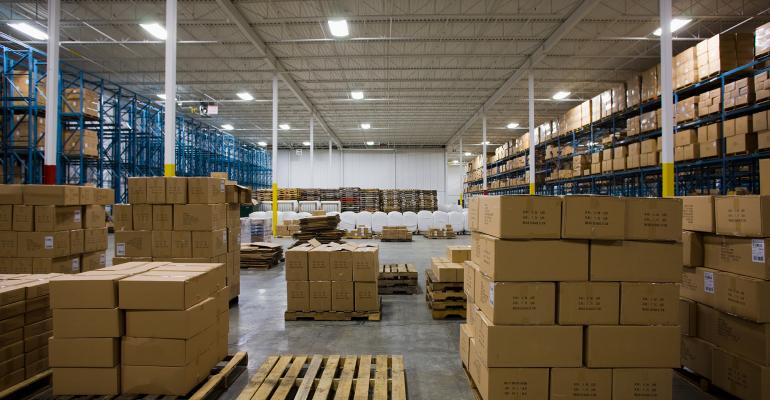Soaring demand and constrained supply have caused industrial property values to rise for the past decade. But with the pandemic accelerating an increase in online sales, the industrial commercial property price index (CPPI) rose 8.8 percent over the previous year, with warehouse values surging 10 percent and flex industrial values rising 6.5 percent, according to a recent report from real estate date firm Real Capital Analytics (RCA).
And it’s not over yet, suggests Alan Pontius, senior vice president and national director with the office, industrial and healthcare divisions at real estate services firm Marcus & Millichap. He notes that operational expectations for industrial continue to be more bullish than in any other sector. “Expectations remain high for demand and rental growth, with any perceived supply risk limited to only a few markets and not seen as long term,” he says.
Additionally, strong capital inflows are causing cap rates in the sector to compress. At the beginning of the year, cap rates on industrial assets averaged about 6.0 percent. Pontius forecasts that cap rates will continue to fall and might eventually stabilize in the 3.4 to 3.7 percent range. With pricing at all-time highs and cap rates low, sales volume on industrial properties might be expected to cool down, but that hasn’t happened. Single-asset sales in the sector surged by 16 percent year-over-year in the fourth quarter of 2020, to $22.8 billion, according to RCA. Overall warehouse sales volume rose by 4 percent to $30 billion.
Competition for a limited number of for-sale properties is driving pricing up and returns down, says Dallas-based Steve Rowland, senior vice president of industrial services at real estate services firm Transwestern. “The cap rate for new core industrial product is at 4-5 percent and a little higher in secondary markets, but not by much,” he notes.
The market has supported the high values so far, rewarding investors with high demand for space and rent growth, according to Rowland. He notes that users are willing to pay a premium for space in large population centers including Los Angeles, San Francisco and New York because transportation costs for moving products from afar end up costing significantly more than extra rent.
Additionally, Rowland notes that the industrial asset class has proven to be pandemic-proof. “The industrial asset class is untarnished. There’s little, if any downside risk, so investors are comfortable adding it to their portfolios.”
“A belief in the sustainable strength of industrial is driving continued investor interest in this sector,” adds Pontius. “Supply and demand fundamentals, combined with the outlook for growing demand—fueled largely by continued growth in e-commerce—causes investors to be confident in the sector, with expectations for continued upward on demand and (rental) rates.”
With the future of the retail, office and hotel sectors still murky, many investors are stepping back from those asset classes in favor of industrial, according to Rowland. In fact, many investors are entering this asset class for the first time, according to Orange County, Calif.-based Mike Kendall, executive managing director for investment services, Western region, with real estate services firm Colliers International. Kendall says that these investors see industrial as a “flight to safety.” This includes a number of ultra-high-net-worth family offices that are actively pursuing industrial, as well as a new group of investors that are divesting of other property types to re-channel their money into the industrial sector.
“Buyers are following demographic trends,” says Rowland, noting that many investors are seeking assets in markets with growing populations, such as Texas and the Southeast.
Among 2020’s most active industrial buyers cited by GlobeStreet was Westcor, which acquired $1 billion in properties totaling 11 million sq. ft., Blackstone, Allianz Real Estate and the joint venture of Stockbridge and the National Pension Service of Korea.
However, it’s a seller’s market, according to Pontius, unless there are some asset-related deficiencies such as a less than desirable location or a poor building configuration. In many cases, the largest investors are opting to place significant capital toward new development, he says, given that the pricing of existing inventory and yield expectations generally fall into the 5.5 to 6.0 percent range for an unlevered IRR for best-in-class assets.
As a result, companies like Prologis and Duke Realty are “building to yield,” rather than sinking capital into high-priced, existing assets, says Rowland. “There is extraordinary demand because there is not enough product in the most popular locations,” he notes.
For example, the Leigh Valley-Allentown area in Pennsylvania is the fastest growing industrial market in the nation, according to Matt Dolly, national director of research and analytics at Transwestern. The area experienced 40 percent in inventory growth and 55 percent in rent growth over the current cycle. That growth is the result of development barriers to entry in New York and New Jersey, which have shifted demand and new product development to Northeastern Pennsylvania, Dolly says. As a result, Leigh Valley-Allentown now serves as a distribution point for a region that stretches from New York City to Philadelphia.





